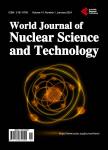Two Ways of High-Energy Heavy Ion Interactions: Spallation and Burst
Two Ways of High-Energy Heavy Ion Interactions: Spallation and Burst作者机构:Kernchemie FB Chemie Philipps-Universitat Marburg Marburg Germany Alikhanov Institute of Theoretical and Experimental Physics Moscow Russia Bucharest Institute of Space Sciences Bucharest Romania Fachbereich Physik Philipps-Universitat Marburg Marburg Germany School of Physics University of Sydney Sydney Australia Dr. Westmeier GmbH Ebsdorfergrund Germany
出 版 物:《World Journal of Nuclear Science and Technology》 (核科学与技术国际期刊(英文))
年 卷 期:2015年第5卷第2期
页 面:73-87页
学科分类:1002[医学-临床医学] 100214[医学-肿瘤学] 10[医学]
主 题:Thick Target High Energy Projectile Unresolved Problems BURST
摘 要:A new approach to solving the observation of enhanced neutron production in high-energy heavy ion induced reactions in thick targets is presented. Two different reaction mechanisms in these interactions are considered: 1) Limited fragmentation of the projectile, called SPALLATION;2) Complete nuclear fragmentation of the projectile fragment into individual relativistic hadrons only, referred to as “BURST. The abundance of this second path increases with the charge and energy of the projectile and may be responsible for enhanced neutron production observed with radiochemical methods in 44 GeV 12C and 72 GeV 40Ar irradiations. Interactions of 72 GeV 22Ne in nuclear emulsions show that SPALLATION and BURST have strongly different interaction signatures, and also that the rate of BURSTS increases from (26 ± 3)% of all interactions in the 1st generation to (78 ± 6)% in the 2nd generation. Further experimental signatures of BURSTS will be described;however, no model based on physics concepts can be presented. This effect may have practical consequences for neutron safety considerations in the construction of advanced heavy ion accelerators.



